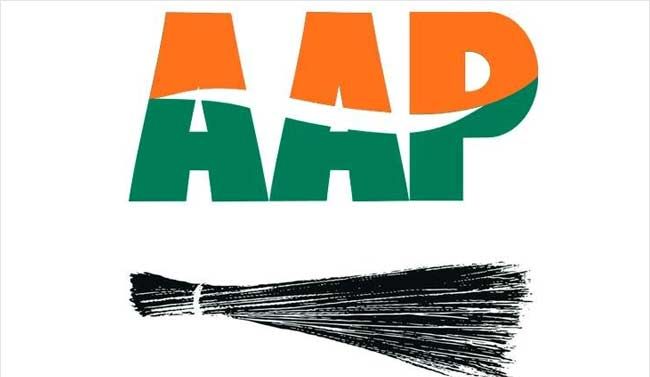New Delhi: The AAP government’s promise to put an end to manual scavenging by mechanising the process, after 10 people were killed cleaning sewers and tanks last year in the capital, remains unfulfilled.
No machines to clean sewers have been purchased by the government despite promises, and also a recommendation by a government committee, after the 10 deaths from July 15 to August 20, 2017, the Public Relations Department of the Delhi Jal Board (DJB), which looks after procurement of machines, told IANS.
The non-availability of machines puts the lives of hundreds of workers, who go down to clean sewers and tanks manually, in danger.
On August 21, 2017, after the 10th person died, protests forced the Delhi government to impose a blanket ban on manual scavenging in the city and promise to buy machines to clean sewers.
“At any cost, no one should go inside sewers. You will have to use the machines you have. Whichever is not available and are needed, we will buy them,” then Delhi Water Minister Rajendra Pal Gautam had said.
Though a committee was formed to look into mechanisation and a decision was taken to purchase 150-200 small machines to clean sewers and tanks in narrow lanes, which was mostly done manually, the plan has not materialised.
When asked about the delay, Gautam, who is currently Social Welfare Minister, told IANS: “So many things had to be done. Our officers went to Hyderabad and later I went to Pune to see the machines and then we had trial of a machine here. Now, we have decided to buy 200 machines and it has reached tendering stage.”
But the process has not reached the tendering stage and the number of machines has not been confirmed, according to the PR Department of the DJB.
“It would be between 150 and 200,” a senior DJB official who was privy to the development told IANS.
“I’m no longer the Water Minister, you will have to talk to the Chief Minister,” Gautam said when asked about other promises.
Two weeks after the 10th death, Gautam was removed as the Water Minister and Chief Minister Arvind Kejriwal took charge of the department and also as Chairman of DJB.
In four incidents, in which a total 10 people died, the script remained the same: Manual scavengers going down sewers and tanks without any protective gear or proper supervision… and it still continues in Delhi.
On an April afternoon, at the Delhi Transport Corporation (DTC) bus depot in Rohini Sector 6, Rahul, 27, stripped down to a red underwear and touched the ground and then his forehead with his hand, before lowering himself into an over-six-foot-deep waste water tank: He had no mask, gloves, boots or any protective gear — the same deficiencies which had killed 10 people.
Before the cleaning began, the private contractor who had taken the work said: “Open the lids and leave it for a while so that if there are any gases, it would escape.”
This was the only precaution taken by the workers among whom was a minor — 17-year-old Hritik Chindaliya. His father, Bittu Babu, 45, told IANS that he had lost his brother while cleaning a sewer.
The workers said that they go down sewers about eight feet long without any protective gear.
“We are scared sometimes, but to fill our stomach, we have to do it,” Ashok Baruri, 32, another worker said.
Ramon Magsaysay award winner and activist Bezwada Wilson, who has been fighting to put an end to manual scavenging for the past 25 years, said that “Delhi is the worst” when it comes to manual scavenging.
“They have not even identified how many people are doing this (manual scavenging) through a survey,” Wilson said. “Once a worker dies, going to the home and giving money is nonsense,” he added. “What are they (government) doing to protect the people who are living?”
“No one should go down to clean the sewers under any condition. 100 per cent mechanisation is the only solution,” he said.
The government was supposed to issue a Standard Operating Procedure (SoP) for everyone, including private contractors, housing societies, malls among others in cleaning sewers and tanks.
The DJB said that they had passed the SoP, but it was pending before the Urban Development Department.
A decision was taken to train all workers, but training has been imparted to DJB workers and around 400 contract workers, but MCD workers and a large number of contract workers have not been trained.
Also, the fact that responsibility for cleaning sewers is spread across different departments — the DJB, three municipal corporations, New Delhi Municipal Council (NDMC), PWD and others — with hardly any coordination or uniform approach, makes the situation complex.
NDMC chairman Naresh Kumar told IANS that cleaning of sewers and tanks were 100 per cent mechanised in NDMC.
When contacted, PWD Principal Secretary Renu Sharma asked IANS to “please talk to DJB” and did not comment on the issue.
Meanwhile, DJB officers said that they were responsible for works only of their department — leaving a large number of contract workers unprotected.
At an asbestos-roofed house in Chhatarpur in south Delhi, 30-year-old Indrajeet Singh’s photo hangs on a wall with a garland around it: He was one of the four manual scavengers who died while cleaning a tank on July 15, 2017 — first of the 10 deaths.
Outside the house, Singh’s mother Maya Kaur, 60, said that after her son’s death she was frustrated to see people going down sewers and tanks.
“I saw three persons cleaning a sewer in Khanpur (in Delhi) of late. This should not be happening,” she said. “What happened to us should not happen to anyone else.”
IANS

